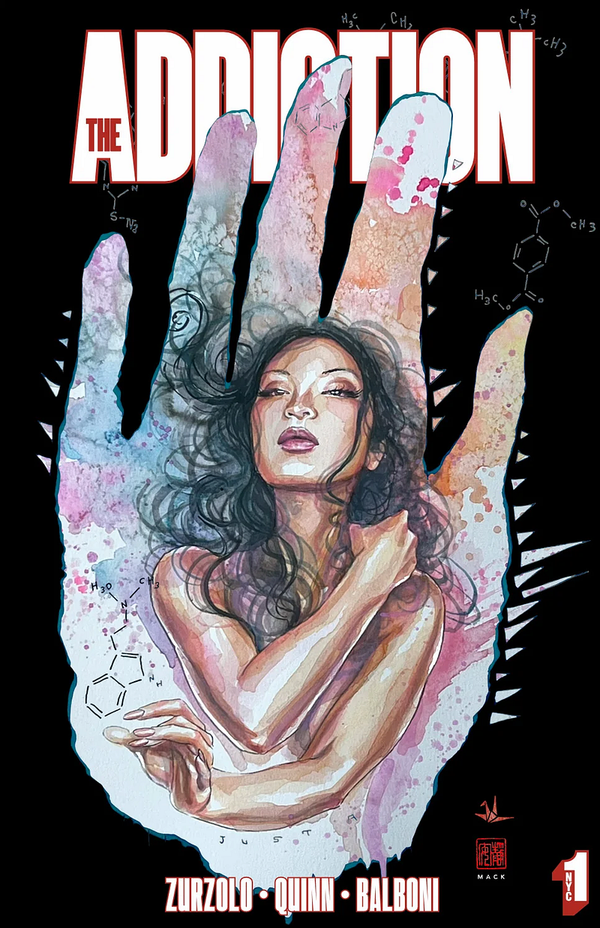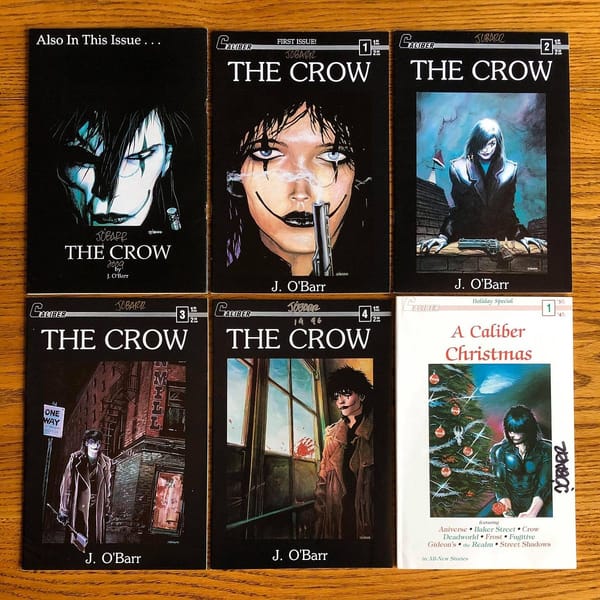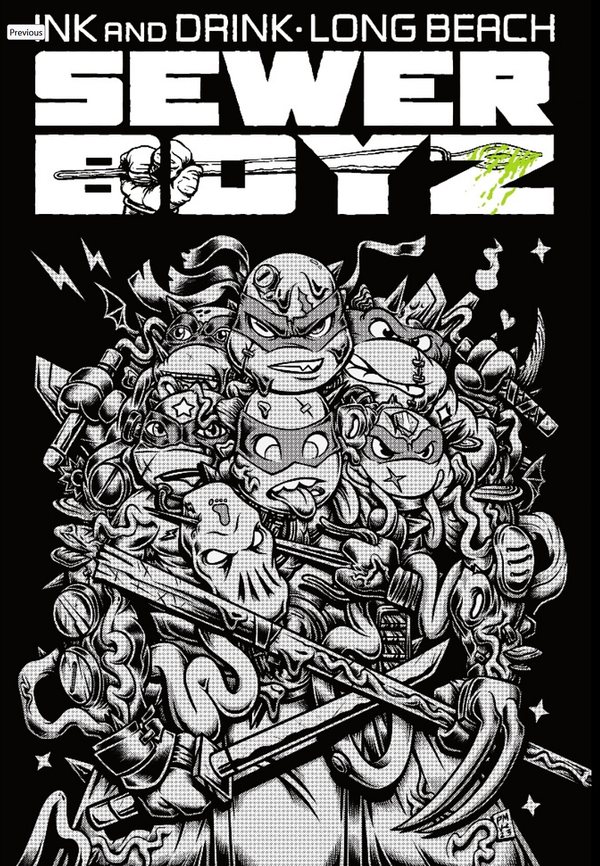Amateur Creator’s Union Part 3: The End
Part 1: My Internet Before the Internet
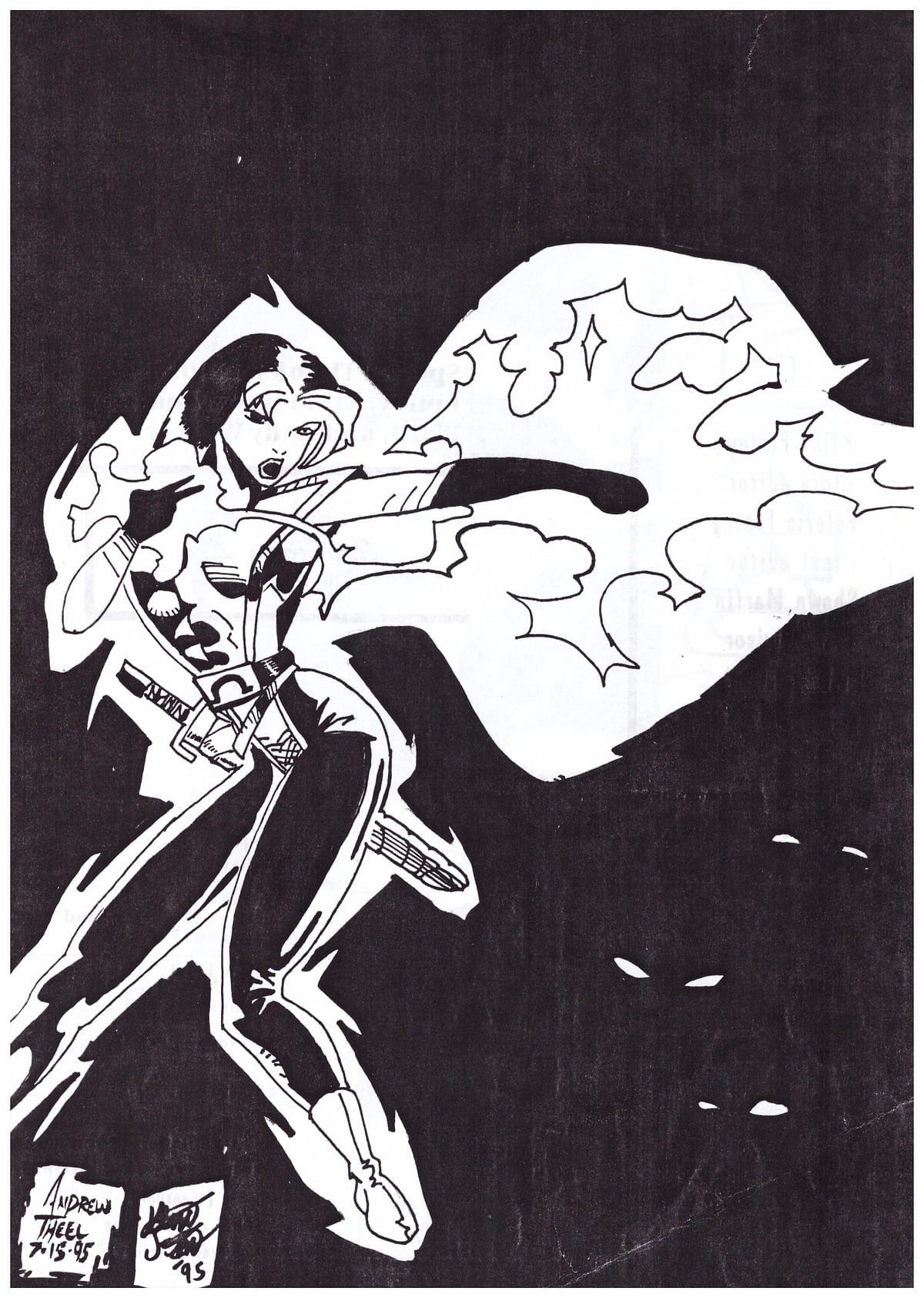
My family moved from Dalhart to Sheridan, Wyoming in December of 1994. It was a difficult move. I didn’t have many friends in Dalhart, but it was hard to leave the ones I had. We’d lived in Texas my whole life, and there’s a particular identity that comes with living in the state. We were giving all that up to live in a state most people have barely heard of.
But I was also excited. The town actually had a comic book store. Maybe I’d make some new friends who actually liked comics. Maybe instead of a network of long-distance friends, I’d have a local community of my own.
Alas, it was not meant to be, at least not in the first couple of years I was there.
The adjustment to the new school was rough. Sheridan is and was a small town — its population was 13,900 in 1990. But Sheridan was twice the size of Dalhart. My school was bigger than I was used to and it felt even bigger than it was because I didn’t know anyone there. It was a sea of unfamiliar faces.
I had a hard time making friends and was picked on relentlessly. I didn’t find anyone who was particularly interested in comics. It remains a mystery to me who the other patrons of the local comic shop were. Whoever they were they didn’t appear to be students at Sheridan Central Middle School. My Amateur Creator’s Union friends became more important to me after the move instead of less.
Ironically, one of the first ACU friends I made after leaving the Texas Panhandle lived in Borger, Texas, just 80 miles away from Dalhart. I got my first packet of art from Andrew Theel the day we arrived in Wyoming.
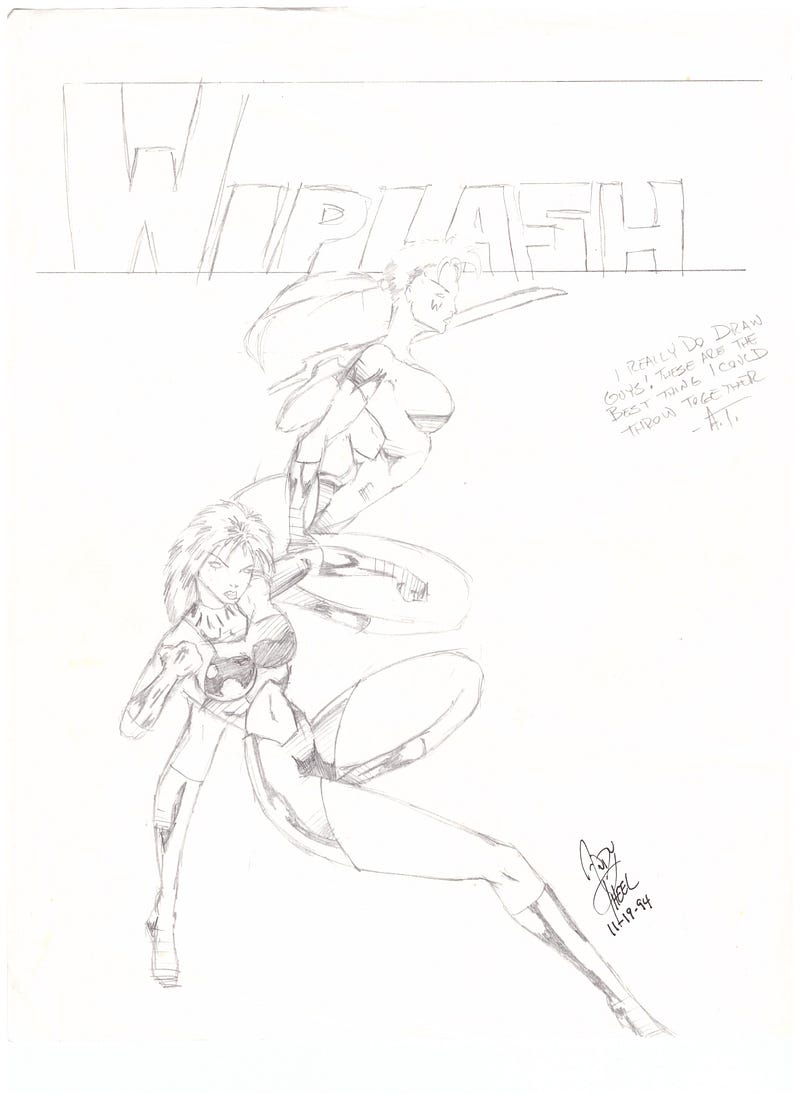
Andrew, 15 or 16 at the time, had his own imprint called Unity Studios, mostly working with his friends in Borger. I agreed to script a series based on a character he called Hologram, who in retrospect was a little like the Silver Surfer. I wrote the first chapter based on his ideas and Andrew penciled, inked, and lettered it. He was really pleased with my script. Looking back it wasn’t good, but it’s true that I fleshed out the seed of an idea Andrew had and added characters with personality. Having an older kid tell me my writing was good a nice confidence boost.
None More Oktober Black
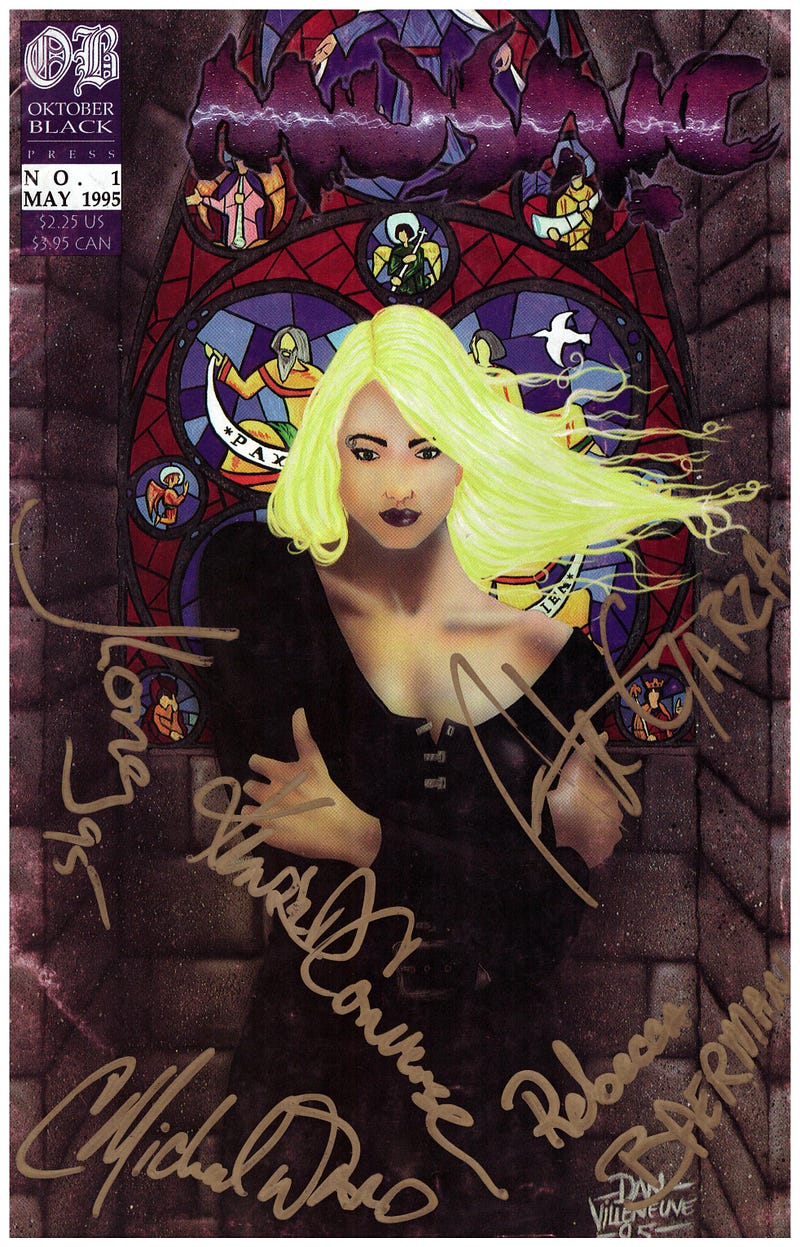
My taste in comics was getting darker. Maybe it started with Spawn or maybe it was a more innate preference, but I found myself drawn to violence, vampires, and the occult. I read Watchmen, Dark Knight Returns, and the first volume of Sandman and started to fancy myself a “mature reader.”
ACU founder Shane Harper announced in Portfolio # 8 that the ACU’s publishing wing Freelance Studios would, in addition to the Domains anthology and ashcans, publish “real” comics for members, including paying for printing. I came up with the idea for my own horror and dark fantasy anthology Sacred Ground. I wrote a story about demons invading a medieval cathedral that Andrew and his friend Allen drew together. Andrew wrote and penciled a story called “Omen” about a woman who returns from hell for revenge. Luis Alonso contributed a werewolf story.
At some point, I renamed my imprint “Typhoon Studios” instead of “Aftermath Entertainment.” I don’t remember why. This was still years before Dr. Dre would name his record label Aftermath Entertainment. Michael Sumislaski, who went on to become a professional graphic designer, drew logos for both Unity Studios and Typhoon Studios. I wish I could find his designs.
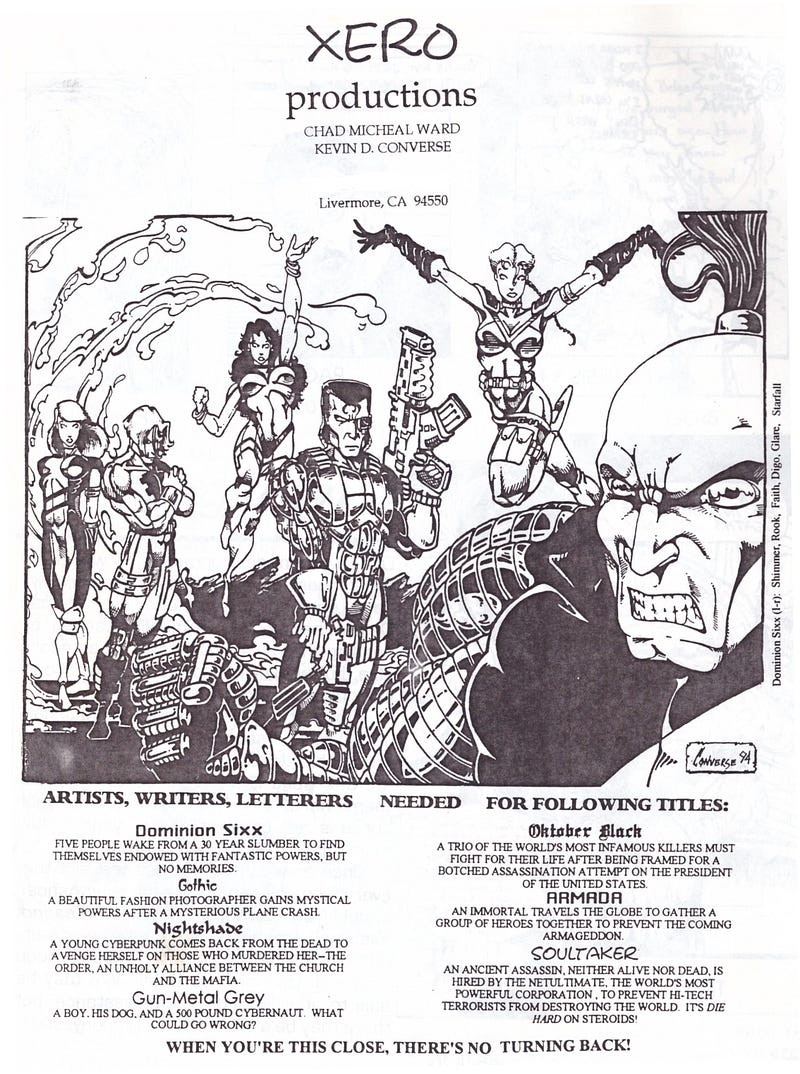
Meanwhile, Chad Michael Ward was assembling a “supergroup” of ACU members in the form of Oktober Black Press. Chad, now well known for his goth and fetish photography, first announced his comics publishing company under the name “Xero Productions” with an in Portfolio 6 1994. At the time it looked like yet another superhero imprint. But Chad soon rebranded the company with the gothier name and announced Mosiac, an anthology full of ACU superstars including Philip Xavier, Rebecca Bareman, and Bill McEvoy. Rebecca designed the ACU and Freelance Studio logos. Xavier and McEvoy were later named the ACU’s most popular members.
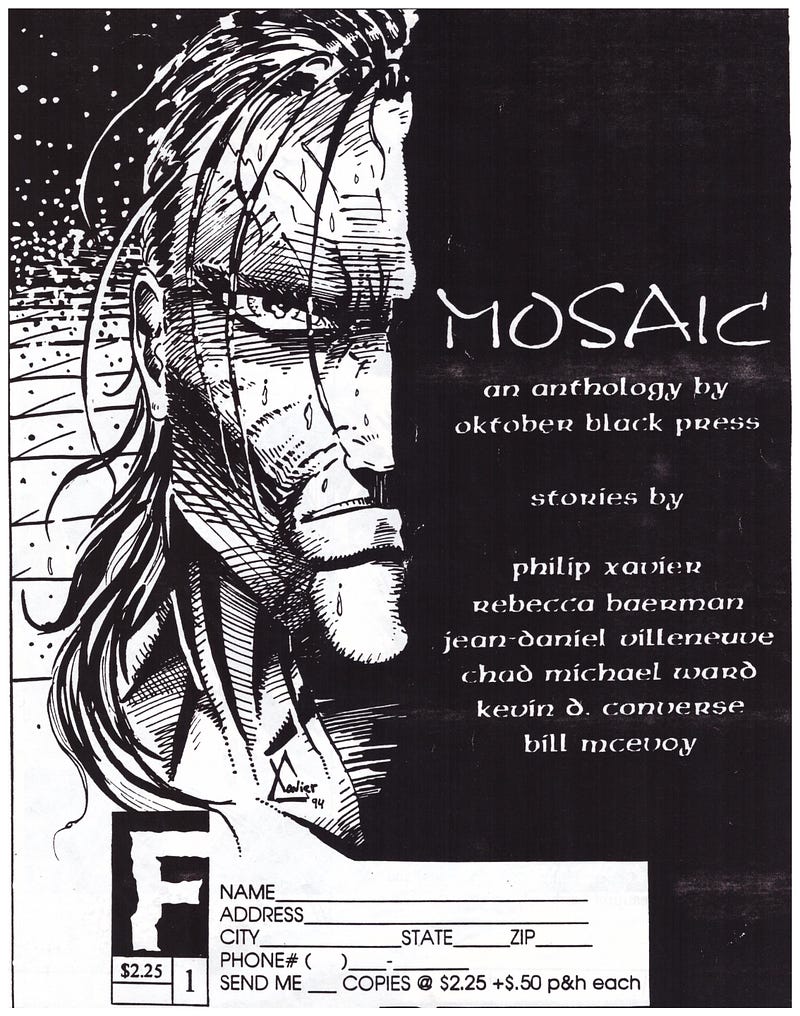
The first issue of Mosiac was solicited for Spring 1995, but I think it actually shipped in early summer (in time for San Diego ComicCon). It was really slickly produced, with a painted cover and nice paper. The art was generally professional. Xavier didn’t end up contributing any sequential work, only pinups, though he and Chad did end up doing a book called Pyrite together for Samson Comics. Mosiac # 1 also featured some of the first published work by Ale Garza, who went on to have probably the most successful mainstream comics career of any ACU alum.
I called Chad often after moving to Wyoming. I don’t remember what the pretense for my calls was, but I just liked talking with him. Chad talked about alternative comics like Cry for Dawn, and about alternative music and film. In Dalhart, not many people my age listened to metal or alternative music my age in Dalhart. The first I heard of “Nirvana” was in 1994 when Shane Booth announced that the ACU’s award for best writer would be named for Kurt Cobain. But in Sheridan, lots of kids wore Nirvana, Pearl Jam, and Nine Inch Nails t-shirts to school — something that was unheard of back in Dalhart.
I was starting to develop the idea of what a “cool person” was, and Chad was becoming a long-distance role model for me. I was starting to develop a notion of coolness that could encompass music and comics. Once I saw The Crow and bought the comic, that idea was cemented for me.
My phone bills were becoming astronomical, getting me into trouble and leaving me with little money to actually buy comics. But my connections to Chad, Andrew, and the other Unity Studios guys like Allen Robinson were crucial for me during those lonely times.
Going Out on a High Note
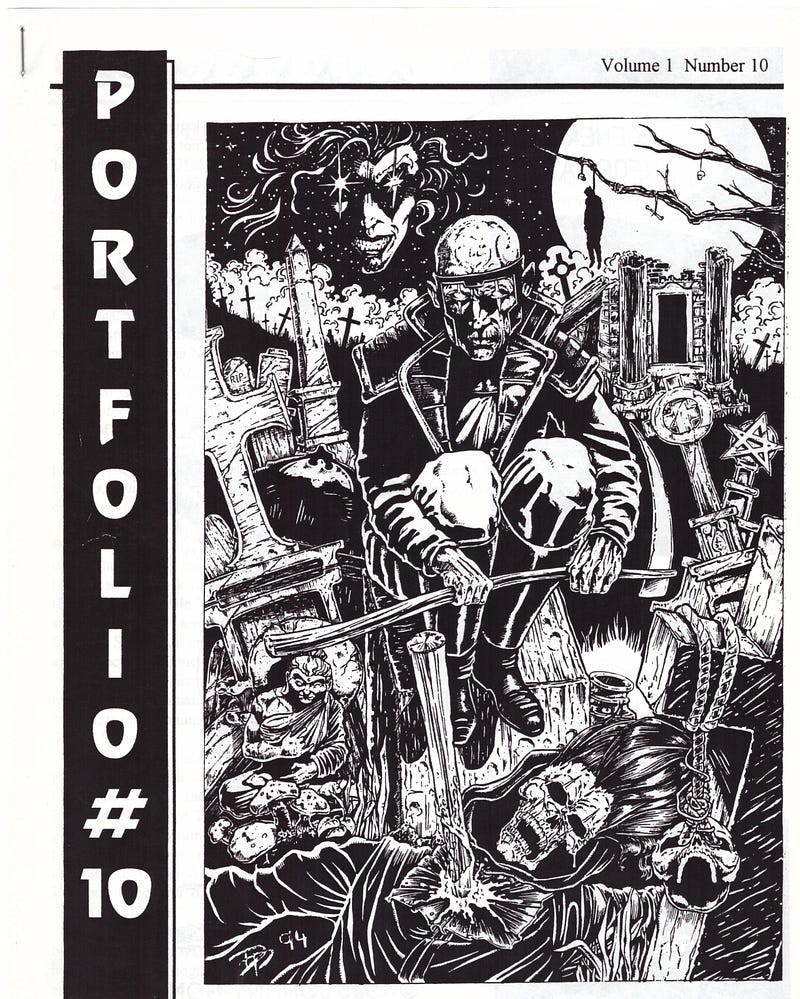
Issue 10 of Portfolio featured an interview with Bill McEvoy conducted by Doc Blalock. That gave me the idea to interview Shane for Portfolio. He agreed to the idea, which was really exciting for me. It was basically my first time doing something journalistic, apart from my own Aftermath newsletters. I remember talking about the early days of the ACU and why he changed the name of Sketchbook to Domains. We probably talked about the ACU electronic bulletin board system, which was announced in Portfolio # 10 but would never ultimately come to be.
I transcribed the interview, my parents helped me go through it for typos, and I sent it off. When issue 11 of Portfolio arrived I tore it open expecting to see my interview. Instead, there was an interview with Shane conducted by Blalock. It turns out they decided to use Blalock’s interview for a big reveal: Shane was stepping down from running the ACU and Blalock was taking over.

I was disappointed, but I understood the decision. I mean, my interview was already outdated because of Shane’s decision to step down. But a bigger disappointment was just around the bend. Within a month or two I received a letter saying the ACU was disbanding, along with a check refunding my second year’s worth of dues.
“Chris was going to take over, and I’m really not sure why he wasn’t able to do so,” Shane says. “I can say that producing the monthly newsletter and trying to handle the needs of 500 plus members was a lot of work for a kid like me, and I imagine it was also a lot of work for someone like Chris who had a full-time job and a family of his own.”
Shane says Blalock worked in a print shop and had plans upgrade Portfolio from being a photocopied newsletter to being a tabloid-sized paper printed on newsprint. “I know that I had to sign an awful lot of refund checks for memberships when it was decided not to continue,” Shane says. “That was tough emotionally, to see it end like that.”
In his final letter to the ACU, Shane wrote that he would continue publishing his own comics under the King Vamp banner. That didn’t end up happening. The ACU cost more to run than it made in membership fees and Shane was eating through the nest egg he had from the car accident. “The 5,000 copy print run of Sketchbook took up about half of what we made from dues,” he says. “The rest went to postage, printing supplies. I never made any money off it.”
“By the time the ACU wound down, I had started driving, so of course I had to get a job that paid actual money instead of pursuing publishing, which was really expensive for someone like me,” Shane says.
Issue 11 ended up being the final installment of Portfolio, but it included an ad for Best Cellars # 1, featuring the first published work of The Goon creator Eric Powell.
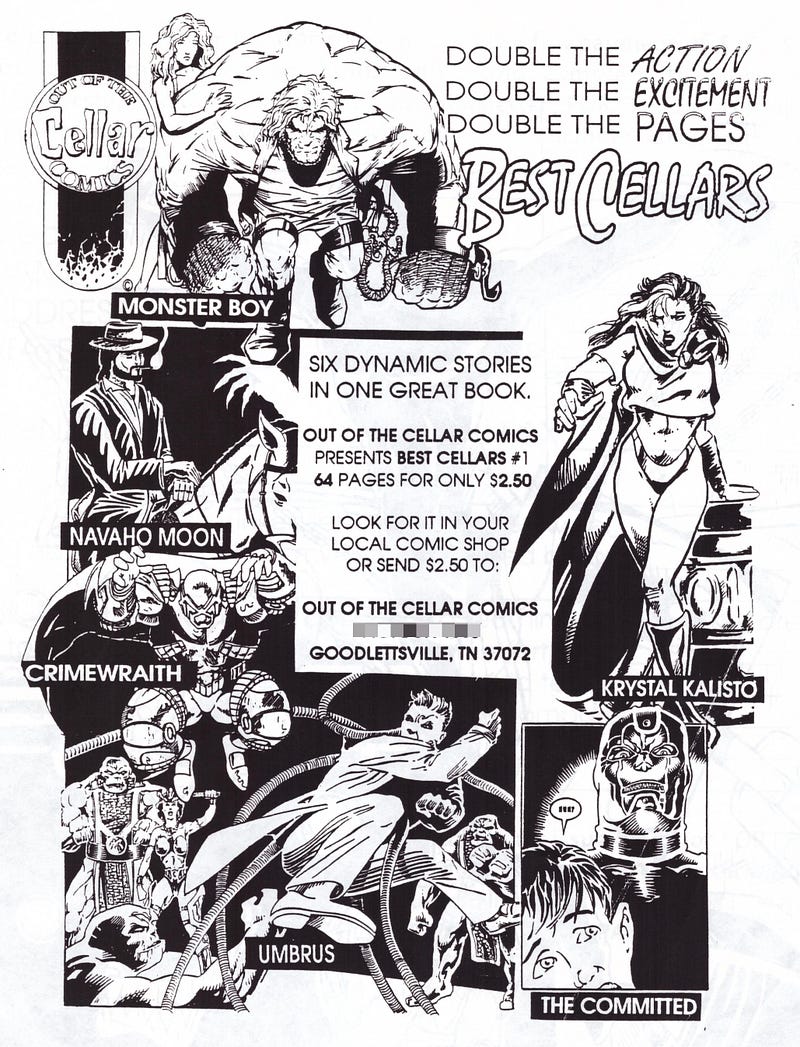
As far as I can tell, Powell wasn’t actually an ACU member. According to his biography The Art (And May Other Mistakes) of Eric Powell, he met the publishers of Best Cellars — fellow Nashville residents — through a previous horror comic they published. But Best Cellars co-publisher Chuck Angell was a member of the ACU, and the book featured work by ACU members Angell, Jaymes Reed (now known primarily as a letterer on books like Alan Moore’s Crossed +100), and Baerman.
Sometimes Best Cellars is incorrectly referred to as the first appearance of The Goon. But Powell’s character in this book was actually “Monster Boy” a visually distinct character with a completely different backstory. Still, the first time I saw The Goon I recognized Powell’s style and thought it was a reboot of “Monster Boy,” so there’s a definite similarity there. The ACU went out with a bang.
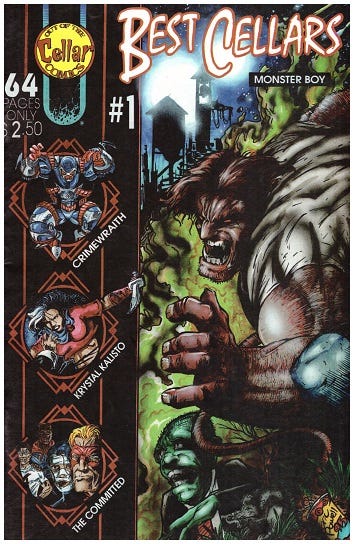
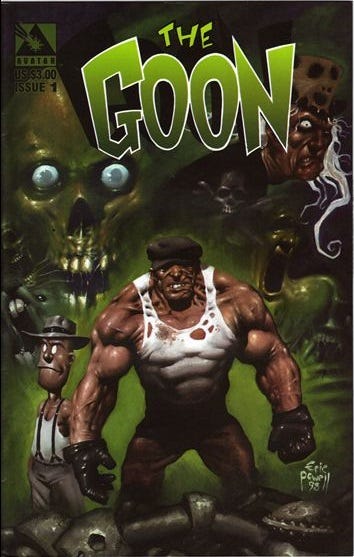
Last Ditch Efforts
The ACU was over, but I hadn’t given up my dreams. My parents and put around $2,000 in a savings account in my name. It was supposed to be for college, still many years away. But though it was a savings account, it still came with a checkbook. There was a limit of something like 5 checks that could be written off the account in a month. Or maybe per year? Anyway, I’d been talking with Chad about self-publishing and he gave me the phone numbers for Brenner Printing and Quebecor, the two biggest comics printers in the country at the time. I got samples and quotes from both and decided that I could probably afford to print Sacred Ground myself. I’d “only” need to sell around 1,000 copies of a 3,000 copy minimum print run to break even. I figured I could do the whole thing without my parents ever even knowing the money was gone.
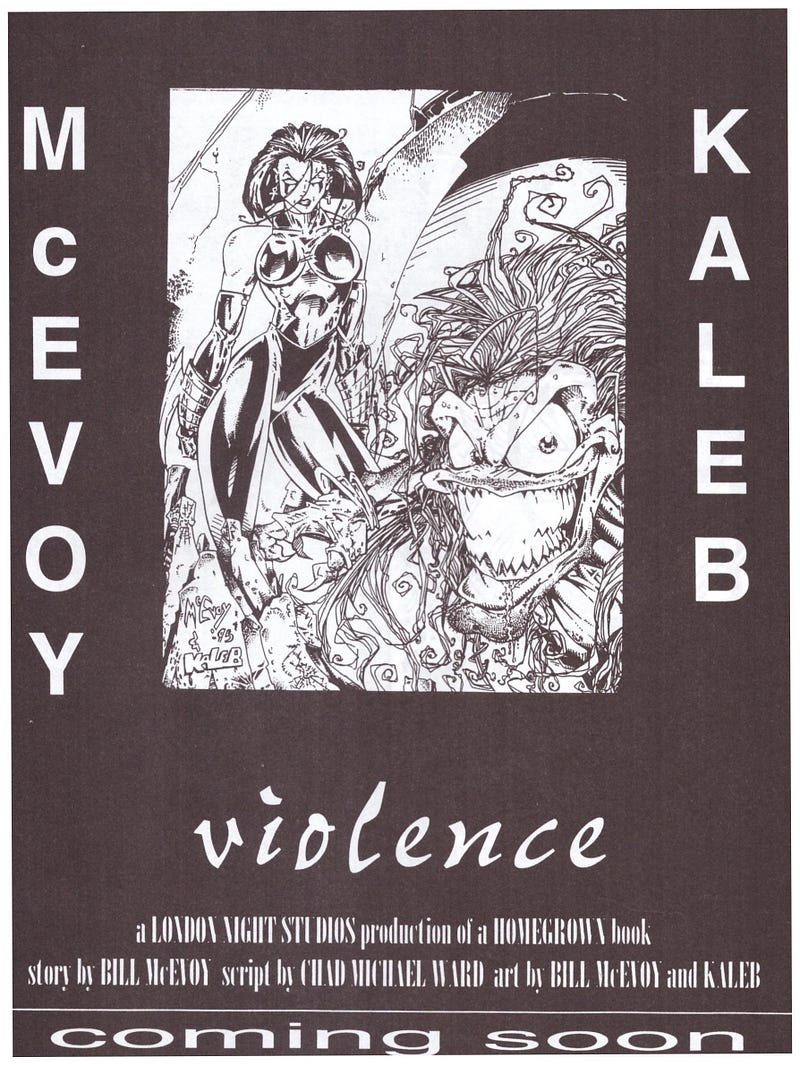
While I was waiting on artists for Sacred Ground I got in touch with McEvoy, probably through Chad. McEvoy’s series Violence, which Chad scripted, was about to be published by London Night Studios and he was looking for people to do backup stories for the series featuring different characters he had created. I wrote a four-page story and sent it to McEvoy. He said was “nice and concise” but that they were going in a different direction and suggested I write a story about a different character of his instead. I was beyond excited: London Night was my favorite publisher at the time. They were a pretty big deal, one of the biggest publishers in the mid-1990s and often mentioned in Wizard. If Bill liked the new script it could have been my “big break.”
I can’t remember how far along I got on the second script, but London Night ended up canceling Violence before the first issue was printed.
Sacred Ground didn’t get off the ground either. The pencils came in, but I didn’t have anyone to ink them, so I decided to ink them myself. Not knowing anything about inking, I just traced the pages with Sharpie and sent them off to Diamond. Diamond promptly rejected the book. They were pretty encouraging overall but said the inking wasn’t up to snuff. Plus I let slip to my parents how I’d planned to finance the book and they told me in no uncertain terms that I wasn’t allowed to use my college money to print a comic book. Diamond’s rejection was a disappointment at the time, but in retrospect they saved me a world of trouble.
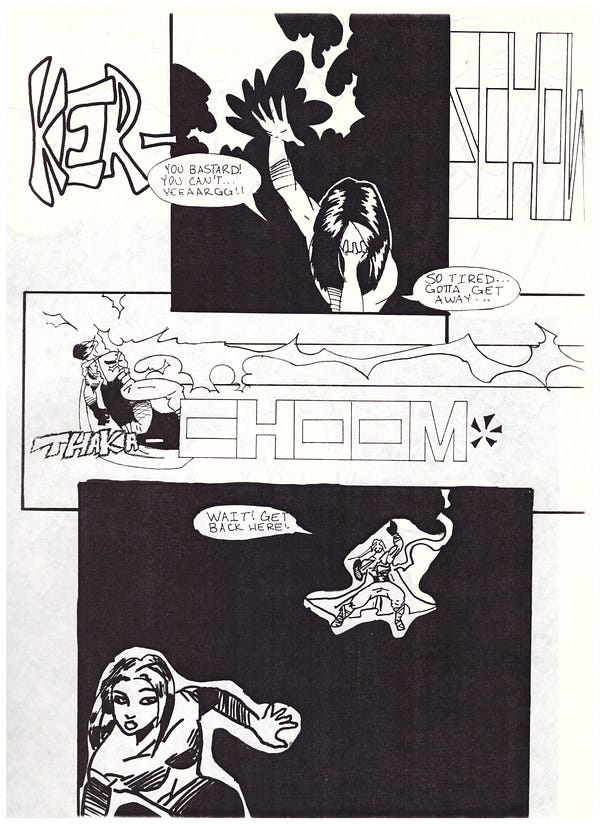
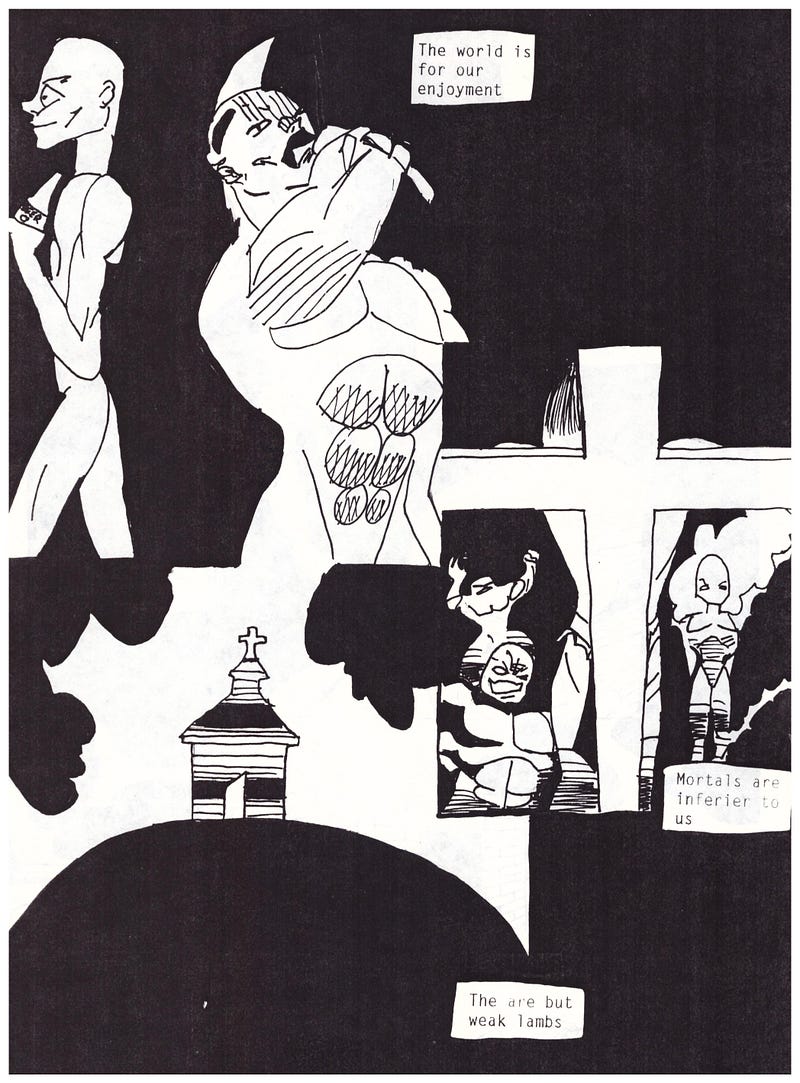
Never Say Die
With no money and no distribution, I turned to the internet as a publishing platform. With comic shops across the country shuttering, it made more sense to publish online comics than deal with the overhead of selling a new title to a dying market. With Luis’s permission, I scanned his werewolf comic and published it on the brand new Typhoon Studios website in early 1996. But we were a little ahead of the times. This was the era of dial-up. If I recall correctly, my hit counters (what we called analytics trackers back then) indicated that a few hundred people read the comic to the end. Luis never sent me another installment.
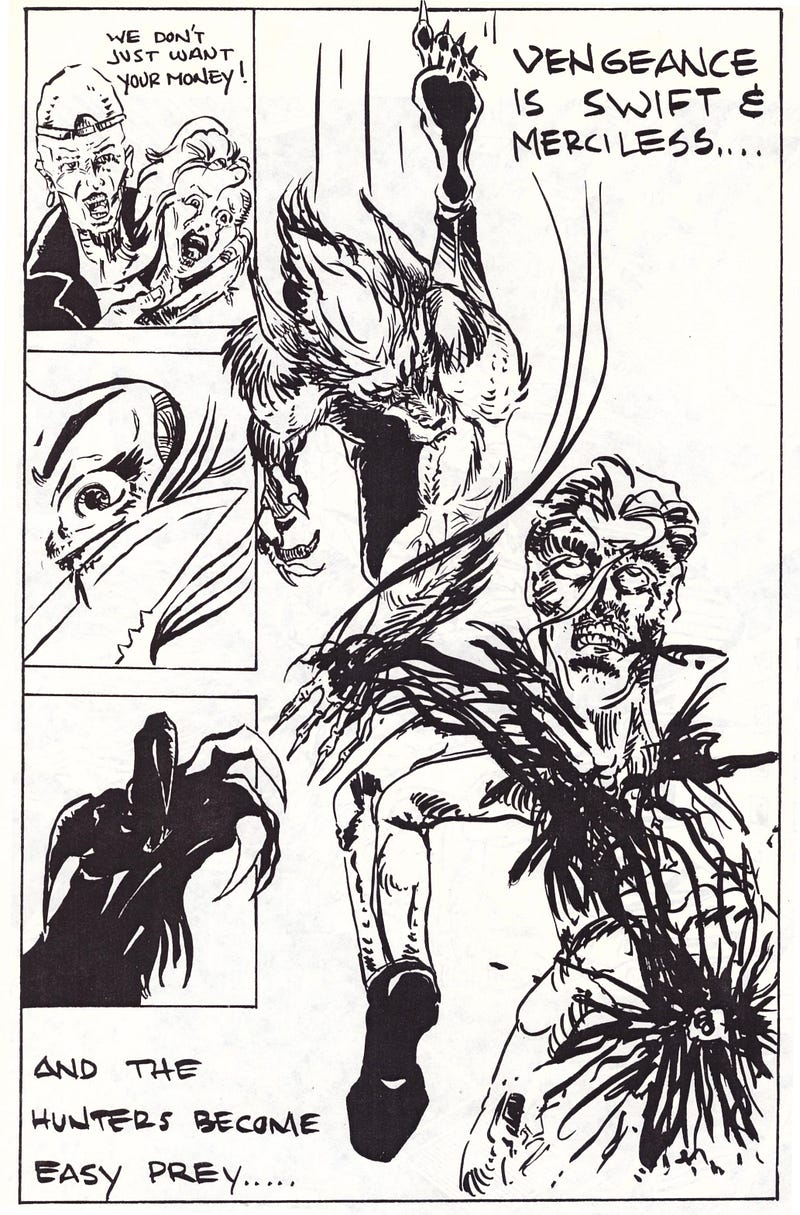
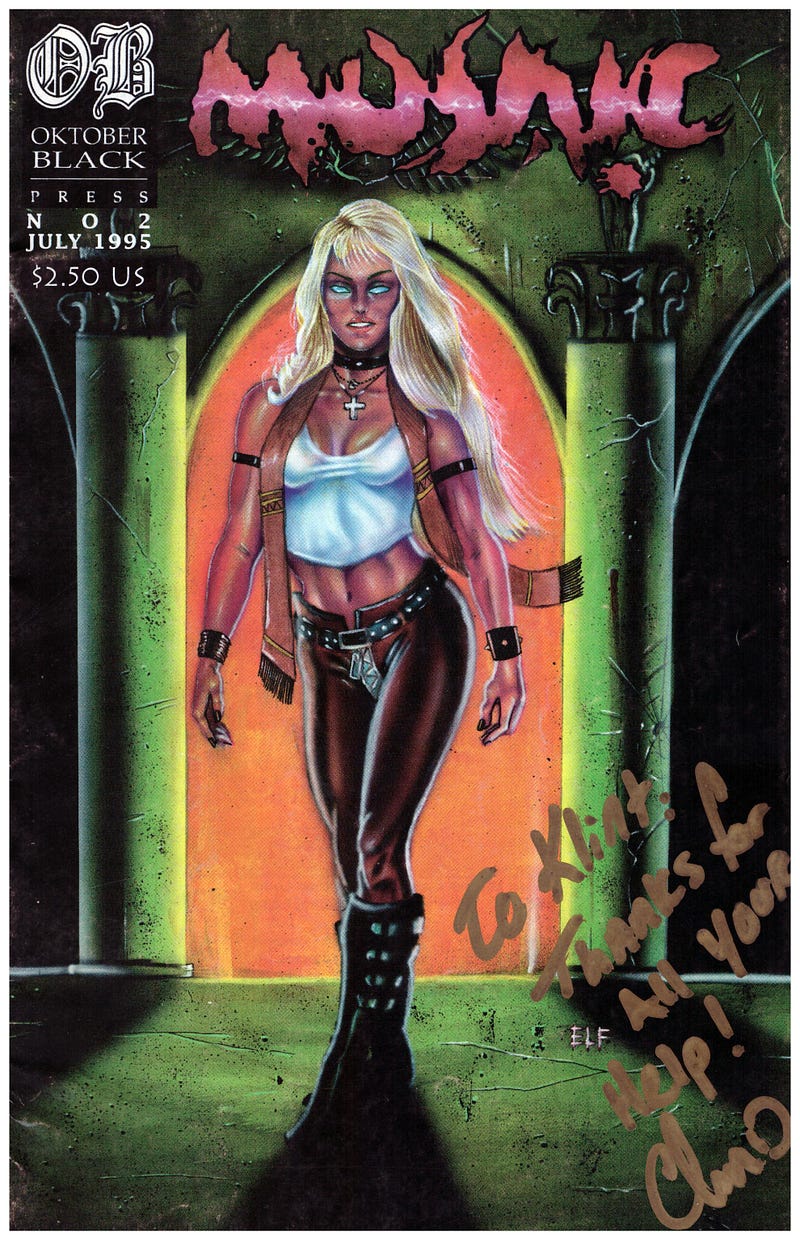
Around the same time, the second issue of Mosiac landed and I volunteered to build a website for Oktober Black. Just before I was ready to launch, someone else Chad knew (one of the artists he worked with I believe) made an Oktober Black site and that became the official site. I was crushed yet again. But Oktober Black only ended up publishing one more comic, Junkfood Noir, a comic written by Chad and illustrated by the late James Helkowski, heavily inspired by Brian Michael Bendis’s AKA Goldfish (Bendis even wrote the introduction) and Tarintino movies. Chad told me it was a lot easier to market a single title than it was to market an anthology. It was good advice, but the cratering market wasn’t able to support his title.
Over the years I got involved with various other groups along the lines of the ACU, including the World View Amateur Comics Association, organized by Ron Earl Phillips, and the comics-pro listserv. There was also a comics webring called Gutters Jam that also had an active mailing list that, if memory serves, involved Ed Dukeshire, who founded Digital Webbing, a site that for many years was probably best implementation of what the ACU was trying to be. I’m not sure what serves that role now. The Tapas forums perhaps?
As I transitioned into high school, I lost touch with most of the people I knew from the ACU. My monomaniacal obsession with comics dissipated as I developed others interests like film and music and politics. I made local friends my own age, bonding over our love for bands like Nine Inch Nails. I turned some of them onto comics, starting with The Crow. I kept reading comics but struggled to write scripts as schools, friends, work, the internet, and other distractions vyed for my time.
I connected with Andrew Theel via Facebook a few years ago, but didn’t really stay in active touch. I was saddened to learn that he passed away last year of complications during surgery. I never got a chance to tell him how important his long-distance friendship was to me when I was 13.
Shane got out of comics not long after the ACU disbanded. He spent some time as a tattoo artist, but says these days he’s content being a dad and working a more traditional job.
I never did publish any of my own comics. I don’t have the reckless creative energy I had when I was 12 and could crank out an eight-page script in an afternoon. It took me two years to finish writing a 48-page graphic novella that I started in 2018. I sure miss the reckless creativity I had when I was young. But I haven’t given up and hopefully my new work is better than my adolescent scribblings. And I’ve had a successful career in professional writing, though not in comics. All those years grilling ACU members over the phone helped me build the skills I’d later use as a reporter. I owe much of my career, my life, and my sense of who I am as a person to the ACU.
So let me give a big thanks to Shane, Chad, Allen, Erik, Luis, Bobby, Anthony, Bill, Mike Taylor, Michael Sumislaski, Chuck, Rebecca, and everyone else who took time out of their days to talk with me over the years to talk with me about comics, the ACU, and creativity. I’ll never forget you.
